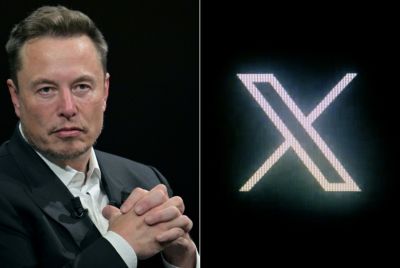The 'Governor of Agents': A New Control Layer for the Age of AI
Quali's Torque platform is emerging as the go-to control layer uniting humans, AI systems, and infrastructure under real-time governance.

A quiet but profound shift is reshaping enterprise infrastructure. As generative AI and autonomous systems proliferate, organisations are seeing a rise not just in workloads, but in agents. These agents independently request resources, execute workflows, and operate without human intervention. The result is a fragmented sprawl of infrastructure decisions happening in real time, often without oversight or accountability.
Automation alone is no longer sufficient. What is missing is an intelligent governor layer, one that not only orchestrates infrastructure but enforces policy, aligns actions with business intent, and prevents runaway cost or risk. As enterprises adopt agentic AI architectures, the need for a control layer that governs both humans and autonomous systems becomes paramount.
Austin-based Quali anticipated this convergence early. While others scaled automation, Torque was built as a multi-tenant SaaS control plane designed for governance at scale, uniting Infrastructure-as-Code, Kubernetes, and AI workflows under a single policy-driven framework. It delivers real-time orchestration, cost-aware enforcement, and secure provisioning, whether you are fine-tuning AI models on DGX clusters or managing ephemeral dev/test stacks across clouds.
The future is not just more automation; it is autonomous orchestration. Torque does not simply react to infrastructure requests; it governs them. It serves as the operational intelligence layer for a world where billions of agents, not just developers, drive compute demand. As organisations face a future defined by intelligent autonomy, Torque provides the oversight, alignment, and guardrails they need.
The eureka moment for Torque was not a gamble; it was a read on where the market was headed. The team anticipated that enterprises would not just face more complexity, but a new kind of complexity: real-time orchestration across hybrid infrastructure, cross-cloud pipelines, policy enforcement, cost control, and increasingly, AI workloads. They also foresaw that the demand for infrastructure would not come only from 30 to 40 million developers, but would eventually scale to billions of autonomous agents – software entities capable of reasoning in real time, executing workflows, and requesting compute independently. Torque was built with that future in mind: a control plane able to act as a Governor of Agents, intelligently orchestrating requests across distributed systems, enforcing security and cost policies automatically, managing GPU and cloud resources for AI workloads, and ensuring that both human and machine actions remain aligned with enterprise governance and business intent.
That foresight led to the creation of Torque, Quali's multi-tenant SaaS control plane. Unlike point tools, Torque was architected to unify Infrastructure-as-Code, Kubernetes, and AI pipelines under a single intelligent, policy-driven framework. It does not just automate, it governs. Torque standardises and secures fragmented environments while delivering real-time orchestration, observability, and cost-aware governance at scale. Internally, Quali describes it as a 'governor of agents,' an operational brain that supervises autonomous software and human users alike, managing everything from fine-tuning AI models on NVIDIA DGX Spark to deploying complex dev/test environments or mission-critical systems.
In an era where AI architectures, developer experience, and business alignment are converging, Quali's early investment in orchestration intelligence has paid off. Torque delivers not only the infrastructure needed today, but the foundation to support what is coming next.
What makes Torque feel timely is its agentic AI architecture. Rather than bolting a single assistant onto a dashboard, Quali built a network of specialised agents that handle discrete tasks across the environment lifecycle: blueprint generation, drift detection, tagging enforcement, anomaly spotting, and cost optimisation. The idea is to automate the repetitive, error-prone work that slows delivery while ensuring every action is traceable and policy-compliant.
That promise has attracted an impressive roster of Fortune 100 enterprises across technology, finance, media, and cybersecurity. Global cloud providers, leading financial institutions, and top-tier SaaS platforms all use Quali software in parts of their operations to bring order and visibility to sprawling infrastructure estates. Reported outcomes are striking: customers have cut cloud and environment costs dramatically, improved developer engagement through self-service environments, and achieved significantly higher GPU utilisation by eliminating idle clusters and enforcing governed workflows. For AI teams, Torque's ephemeral model—to spin up a GPU training environment on demand and tear it down when a job completes—has become a blueprint for efficient, policy-driven AI development at scale.
Under the hood, Torque is a cloud-native, multi-tenant service that integrates with Git, CI/CD, ITSM, and observability tools. It supports hybrid and edge footprints via lightweight agents, bringing the same operational model to on-prem Kubernetes, private data centres, and regulated environments in financial services and healthcare. That matters because the most sophisticated AI builders rarely run on a single public cloud; many operate across three or more clouds and juggle five to seven automation frameworks. Torque's value proposition – one control plane for blueprinting, orchestration, policy, and cost – resonates in that heterogeneity.
The timing is favorable. AI workloads are surging faster than most platforms were designed to handle, and the talent bottleneck is real. By some counts, there are 24 million developers globally, but only a small fraction with deep infrastructure expertise. Meanwhile, cloud waste, idle resources, and over-provisioning exceed 200 billion dollars annually. In boardrooms and budget meetings, that math has shifted the conversation from 'move fast' to 'move fast under control.' Torque's combination of self-service and governance is engineered for exactly that constraint.
Quali's positioning also draws a deliberate contrast with legacy cloud management platforms. When HPE acquired Morpheus to bolster its GreenLake story, it signaled that the classic CMP remains relevant for centralised IT buyers. Quali argues that AI-era delivery lives elsewhere: with platform-engineering teams who need a developer-friendly layer that creates standards without creating a queue. Torque's Environment-as-Code approach attempts to square that circle, codifying best practices while making them instantly consumable through catalogs, APIs, and pipelines so product teams never wait on tickets.
The company's ecosystem helps. Partnerships with Cisco, Dell, and Hitachi give Torque reach across networks, storage, and code workflows, while ongoing work with GPU and AI providers targets the pain points of scheduling and right-sizing expensive accelerators. On paper, it is a control plane designed as much for the CFO as for the SRE: enforcing tagging at creation, allocating costs to projects automatically, and shutting down what is not used without devolving into a spreadsheet war with engineering.
It is true that enterprises can build internal platforms. The challenge is keeping them secure, supported, and relevant. Most become liabilities over time, expensive to maintain, rigid to evolve, and unable to adapt to rapid market shifts like the emergence of AI-native workloads. Torque offers a better path: faster time-to-value, continuous innovation, and a lower total cost of ownership than bespoke toolchains. Its coverage spans from developer sandboxes and test labs to mission-critical AI environments, ensuring every action, whether triggered by a human or an autonomous agent, remains policy-compliant, cost-efficient, and observable. And it scales in the real world. Cisco DevNet alone counts over 750,000 registered users, with more than 100,000 already operating on Quali infrastructure. Torque proves that governance at scale is not a concept, but a capability, enabling enterprises to manage both developers and AI systems under one unified control plane.
Torque is not a CMP, a FinOps tool, a workflow engine, or an AIOps suite. It is a unified control plane built for modern AI infrastructure. It centralises environment management, enforces policy, automates orchestration, and optimises cost across every stage of the development lifecycle. As AI initiatives scale, they introduce transient infrastructure, multi-cloud complexity, and heightened compliance risk. Without a control plane, AI agents outpace governance. Torque solves that problem by design.
© Copyright IBTimes 2025. All rights reserved.





















